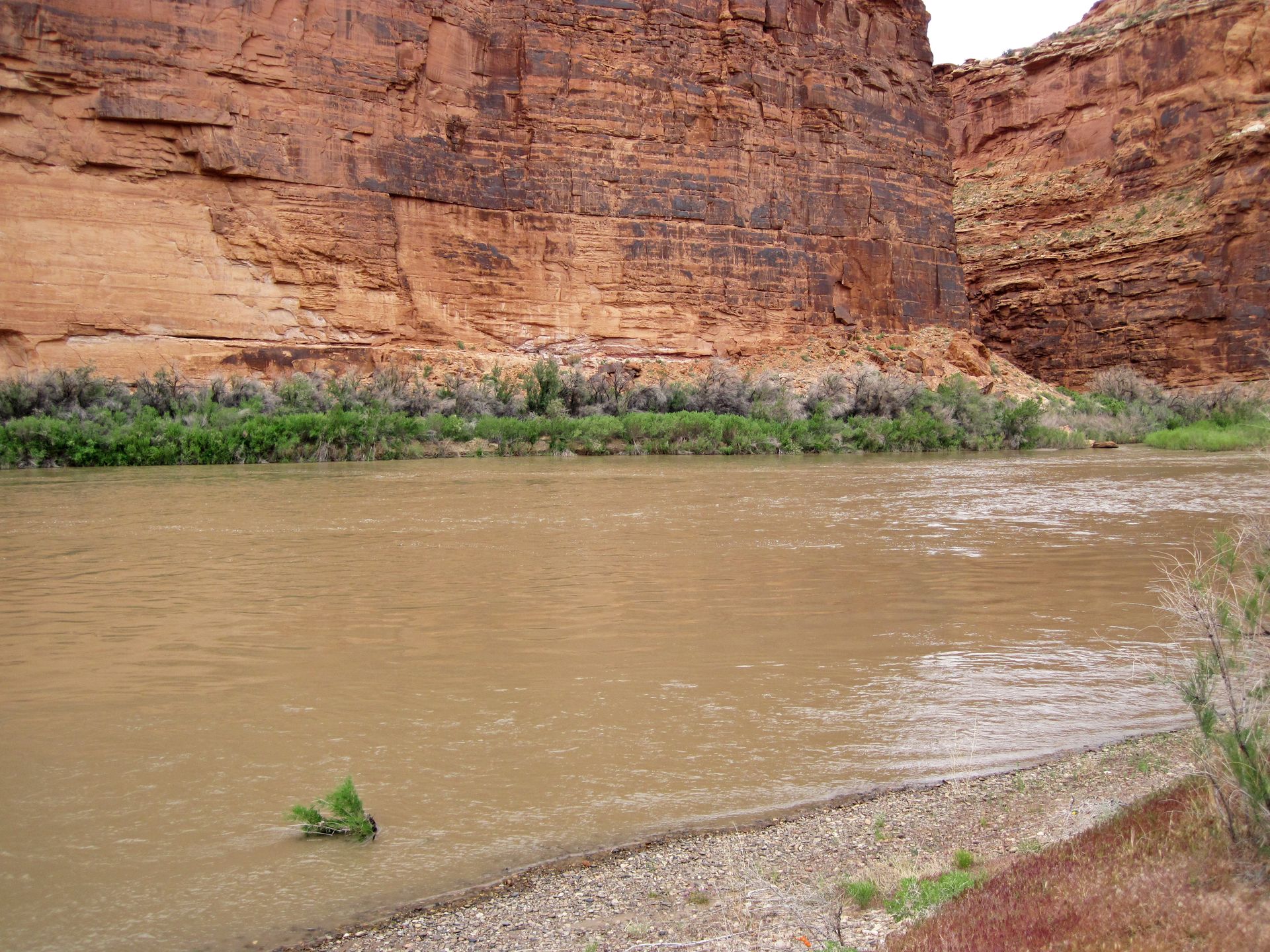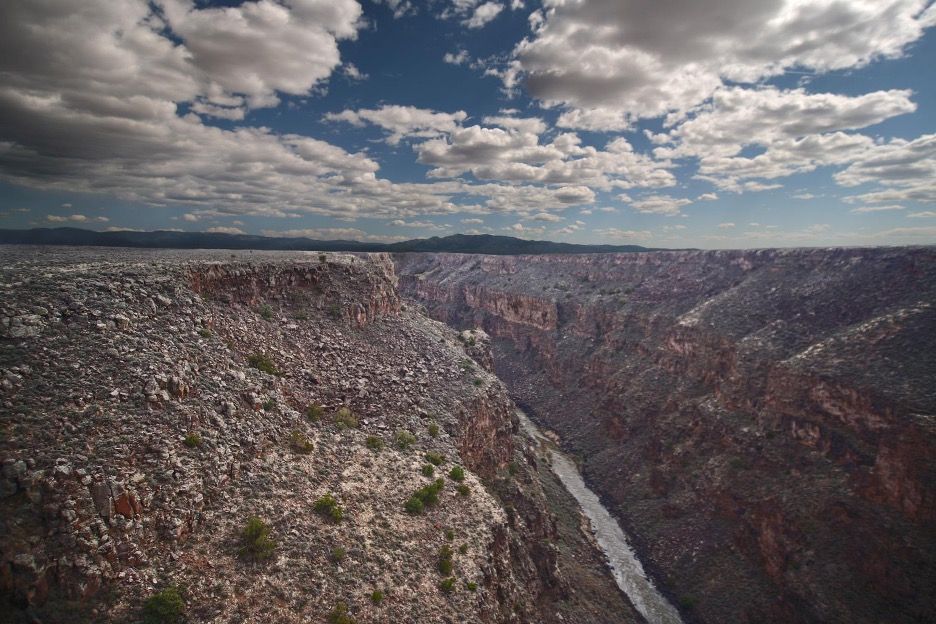Introduction
Fifty years ago, the tide was turning in the war in Vietnam, the civil rights movement was in full swing, and the cold war was raging—but American industry was booming. The United States Congress and the Lyndon B. Johnson administration, however, recognized the danger that industry and development posed, particularly to America’s rivers. Responding to that threat, President Johnson signed the Wild & Scenic Rivers Act (“the Act”) into law on October 2, 1968. Now, fifty years later, it is possible see where the Act has been successful, where it has met challenges, and where it has developed along the way.
The end of the 1960’s marked a point of awakening for American conservationism. The scale of industry was coming to a point where industrial effects on the environment were impossible to ignore. America’s rivers were particularly suffering from decades of damming, development, and diversion. Congress turned to address these issues at the end of the 1960s, beginning America’s modern history of environmental law and setting up the 1970s as the environmental decade. The Wild & Scenic Rivers Act was one of the first pieces of legislation passed during this surge of environmental protectionism. To this day, it remains one of the strongest protections available for American rivers as it preserves the essential character of rivers in their natural, free-flowing state.
How it Works
The Act gives Congress—and in some circumstances, the Secretary of the Interior—the power to designate rivers for protection that “possess outstandingly remarkable scenic, recreational, geologic, fish and wildlife, historic, cultural or other similar values.” This range of possible reasons for designation gives Congress a fairly broad grant of authority. Congress may also designate smaller sections of a river under the Act, including tributaries, instead of the entire river. The ultimate purpose of the Act is to ensure that protected rivers will be preserved in free-flowing condition for the enjoyment of future generations. The Act also requires that future development in non-protected areas implement policies that ensure designated rivers remain protected.
Congress can classify rivers as “wild,” “scenic,” or “recreational.” The classification does not prescribe how an area is managed; it simply denotes the relative degree to which the area has been preserved. Regardless of the classification, each area is afforded the same protections. “Wild” river areas are those that are representative of “primitive America.” These are defined in the Act as areas with pristine waters, undeveloped shorelines, and trail-only access. A “scenic” area is still relatively undeveloped, but parts are accessible by car. A “recreational” area may have some development and is readily accessible by car.
The typical means of designating rivers under the Act is through Congress. Congress first instructs that the agency with authority over a River—such as the National Park Service, National Forrest Service, or Bureau of Land Management—study a river area and determine if it is suitable for designation. The president or a state can also suggest areas for designation. After receiving the agency’s report, Congress can then choose whether to designate the river or not, regardless of the agency’s findings. In designating the river, Congress must classify the area as wild, scenic, or recreational and determine which outstandingly remarkable values (“ORVs”) are worth preserving.
A “wild and scenic” river is primarily protected through federally coordinated actions set out in the Act. First, the Act directs agencies to take action necessary to preserve the river in its free-flowing condition and enhance its ORVs. The Act also prohibits the Federal Power Commission from licensing the construction of a hydroelectric dam or other project that would affect a designation. Additionally, the Act prohibits any federal agency from loaning, granting, or licensing a water resources project that would have an adverse effect on the designated area’s ORVs.
Once Congress has designated an area as a Wild and Scenic River, a federal or state agency becomes responsible for administering the area. As the Act does not stipulate a specific agency to administer, the agency that normally oversees the area will typically be given responsibility. Regardless of the classification, the primary responsibility of the administrator of the area is to protect and enhance the “outstandingly remarkable” value or values under which Congress made the designation. Private property in the area and existing state-allocated water rights are subject to condemnation to achieve the purposes of the Act. The federal government, however, is limited in how much land can be condemned in any one designated area.
Unfortunately, recourse for holding an administrator accountable is somewhat limited, as the Act does not authorize citizen suits. This means that in order to hold an agency accountable for not properly administering a Wild and Scenic River, a plaintiff must sue that agency under the Administrative Procedure Act. The court will review agency actions under an arbitrary and capricious standard, which provides the agency with broad discretion as to how a designated river is managed, making it unlikely that most challenges would be successful.
The Evolution of the Act
Throughout its fifty-year history, Congress substantively amended the Act nearly thirty times, but the most significant changes to the Act occurred about ten years after the Act was originally passed. By 1978, the Wild and Scenic Rivers system was expanding quickly; Congress, reacting to growing pains of the system, amended the act with the intent to assist in the expansion of the system. The National Parks and Recreation Act of 1978 (“NPRA”) brought about some of the most sweeping changes to the Wild and Scenic Rivers Act, amending six separate sections of the original Act.
First, the NPRA amended Section 2 of the Act—the section guiding state-administered components—to allow federal funding for designated areas on federally owned land that are state-administered. This amendment specifically responded to an issue with the Department of the Interior objecting to designations where a significant amount of federal land bordered a designated area. Because the original 1968 Act lacked this provision, the Department of the Interior could object to such designations on the grounds that the federal lands could not be funded and managed properly.
The NPRA also amended Section 6 of the Act—the section regulating acquisitions—by changing the definition of “improved property.” The amendment is significant because the owner of an improved property that is acquired under the Act is limited to using and occupying the property for twenty-five years. The original Act only included dwellings constructed before 1967, and this amendment removed that limitation. Now, all those affected by acquisitions under the Act are entitled to this twenty-five year grace period.
Another significant amendment changed Section 14 of the Act—the section on leasing federal lands—also aimed to help those whose property was acquired under the Act. The amendment gives the administering agency the power to lease acquired lands if the lease is restricted to private uses compatible with the Act. In passing the amendment, Congress specifically contemplated that these leases would be offered first to the person who owned the land before the United States acquired it.
Nearly a decade after the NPRA became law, Congress scrutinized the Act again to address growing pains of the system and amended it another seven times. One of the most notable amendments from this wave of changes is to Section 6 (acquisitions), and continued a pattern of expanding federal power under the Act. The amendment gave the administering agency the power to acquire land that lies partially within and partially outside the boundary of a Wild and Scenic River. If the state owns the land, the amendment allows the federal government to acquire the land by exchanging federally owned land.
Notable Designations
When the Act was passed, Congress designated eight rivers as National Wild and Scenic Rivers: the Clearwater and Salmon Rivers in Idaho, Eleven Point River in Missouri, the Feather River in California, the Rogue River in Oregon, the Wolf and St. Croix Rivers in Wisconsin, and the Rio Grande in New Mexico. Today, fifty years after the Act was passed, there are now more than 12,500 miles in forty states and Puerto Rico. However, given the sheer size of the United States, the amount of area protected under the Act represents a mere 0.33 percent of America’s rivers. In comparison, damming alone has modified at least 17 percent of our rivers.
One of the original eight designations when the Act passed in 1968 protects sixty-eight miles of the Rio Grande in New Mexico. The protected area spans from the Colorado border through the eastern part of Rio Grande del Norte National Monument. The designation is based on a number of outstandingly remarkable values, including cultural and geologic value in addition to the typical scenic and recreational value.
In 1981, Congress protected 286 miles of the Klamath River under the Act on the coast of California. Congress designated the area of the river from the central part of the Oregon border all the way to the Pacific Ocean. The Klamath was specifically protected for its fisheries, which support a number of endangered species.
Congress designated eighty-six miles of the Allegheny River in Pennsylvania in 1992. The protected area begins at Buckaloons Recreation Area and continues downstream to Acorn Island. The designation is largely based on recreational opportunities, specifically canoeing and fishing.
The Act Today
In the last ten years, Congress has designated nearly forty new river areas as National Wild and Scenic Rivers. One of the largest years for new designations in the history of the Act was 2009, with thirty-two new areas gaining protection all across the country. Prior to 2009, Congress made new designations under the Act virtually every year. Since then, however, there have been only six new designations, all in 2014. Among the new designations were rivers in Washington, Arizona, and Vermont—and one existing designation was added to White Clay Creek in Delaware. Significantly, Congress also designated fourteen new river areas to study in 2014. Four years later, and Congress has yet to approve any new designations, however bipartisan legislation has recently moved forward to designate East Rosebud Creek in Montana.
Today, several areas of the Act are commonly litigated in federal court. Boundary designations are one of the most litigated areas, and have been throughout the history of the Act. Property owners challenge boundary designations to avoid acquisition or increased limitations affecting use of their property. Cities and counties also challenge designations if they feel prejudiced, as the Act can severely limit construction, irrigation, and discharge into a river. Designations typically face challenges on the grounds that the administering agency did not comply with the Act, usually by not identifying ORVs specifically enough. Boundaries must be consistent with protecting and enhancing a designation’s ORVs. However, objectors also challenge designations on the grounds that a certain area is not fit for designation. For example, in 2017 in Oregon, a group of ranchers challenged a designation on the Rogue River arguing that it had already been developed to such an extent that it was no longer fit for designation.
Another area of the Act that is frequently litigated today is how to actually manage the Wild and Scenic River system. Specifically, agencies frequently face challenges because they did not prepare a comprehensive management plan (“CMP”) for a designated area. The courts have recognized that the Act does not actually mandate agencies to draft a CMP, yet courts have required agencies to do so in certain instances, including through injunctive relief. Another common management challenge is to an agency’s decision regarding balancing competing uses. This usually comes up in the context of preexisting uses of the river area before designation. As these agency decisions are reviewed under an arbitrary and capricious standard, these challenges typically find little success.
In the next fifty years of the Act, we may see Wild and Scenic River designations being consciously used to combat climate change, as preserving America’s most important rivers could help mitigate some of the effects. As the changing climate continues to shrink and degrade critical habitat for aquatic species, America’s Wild and Scenic Rivers can provide essential repositories and corridors for certain species. Furthermore, as both drought and flooding have increased with the onset of climate change, Wild and Scenic Rivers can also help both preserve drinking water for a growing population and also maintain flood security.
Conclusion
By 1968 it was clear to Congress and the Johnson administration that America desperately needed to respond to increasing environmental degradation from industry and development. Recognizing the importance of our shared heritage, Congress gave Americans the gift of the Wild and Scenic Rivers Act. In the fifty years since the Act was passed, Congress has seen fit to designate and preserve over 12,000 miles of river for the benefit of future generations of Americans. While the amount of new designations has been steadily declining, the Act still offers some of the staunchest protections for America’s most beloved rivers. In every corner of the country, Americans likely have the Wild and Scenic Rivers Act to thank for the memories of lazy river days that we as Americans cherish as a part of our shared heritage.
Sources
47 Fed. Reg. 39454, 39458.
Allegheny River, Wild and Scenic Rivers Council, https://www.rivers.gov/rivers/allegheny.php.
Celebrating Fifty Years, Wild and Scenic Rivers Council, https://www.rivers.gov/wsr50/index.php.
Federal Agency Roles, Wild and Scenic Rivers Council, https://www.rivers.gov/documents/federal-agency-roles.pdf.
Interagency Wild and Scenic Rivers Coordinating Council, Evolution of the Wild and Scenic Rivers Act (2014), https://www.rivers.gov/documents/wsr-act-evolution.pdf.
Jessianne Wright, Bipartisan Legislation Moves Forward for Montana Wild and Scenic Designation, Explore Big Sky (Jan. 7, 2018), http://www.explorebigsky.com/bipartisan-legislation-moves-forward-for-montana-wild-and-scenic-designation.
Karina Brown, Oregon Cattlemen Fight Wild & Scenic River Designation, Courthouse News Service, (Mar. 16, 2017), https://www.courthousenews.com/oregon-cattlemen-fight-wild-scenic-river-designation.
Klamath River, Wild and Scenic Rivers Council, https://www.rivers.gov/rivers/klamath-ca.php.
Max Greenberg, Get to Know These Amazing Rivers: A Celebration of the Wild & Scenic Rivers Act, The Wilderness Society (October 2, 2014), https://wilderness.org/blog/get-know-these-amazing-rivers-celebration-wild-scenic-rivers-act.
Missouri River, Wild and Scenic Rivers Council, https://www.rivers.gov/rivers/missouri-mt.php.
Murray Feldman et al., Learning to Manage Our Wild and Scenic River System, 20 Nat. Resources & Env’t 10 (2005).
Wild and Scenic Rivers Act, 16 U.S.C. §§ 1271–1287 (2014).
Wild and Scenic River Designation, Wild and Scenic Rivers Council, https://www.rivers.gov/designation.php.



